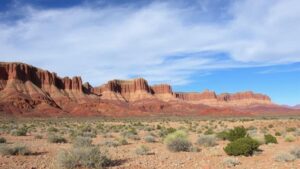Investigating meteorite fragments in Siberia’s Tunguska region, where a mysterious explosion occurred in 1908.
Investigating Meteorite Fragments in Siberia’s Tunguska Region
The Tunguska event of June 30, 1908, remains one of the most significant and enigmatic explosions in recorded history. Located in a remote area of Siberia, this explosion flattened approximately 2,000 square kilometers of forest and released energy equivalent to 10-15 megatons of TNT. For rockhounds and mineral collectors, the Tunguska region presents a unique opportunity to investigate and potentially collect meteorite fragments related to this extraordinary phenomenon.
The Tunguska Event: A Brief Overview
The Tunguska explosion is widely believed to have been caused by the airburst of a small comet or asteroid, roughly 50-60 meters in diameter, entering Earths atmosphere at high speed. resultant explosion resulted in the destruction of around 80 million trees and the alteration of the landscape in the region. Despite extensive research since this event, no impact crater has been definitively identified, leading to increased interest in potential meteorite fragments scattered across the vast Siberian wilderness.
Scientific Significance of Tunguska Meteorites
Collecting meteorite fragments from the Tunguska site is of exceptional scientific importance. The isotopic composition of these meteorites may help researchers understand the building blocks of our solar system and the processes that shaped planetary bodies. For enthusiasts and collectors, obtaining Tunguska meteorites represents a tangible piece of our cosmic history, as well as the potential for significant scientific contributions.
Identifying Tunguska Meteorite Fragments
While specific fragments related to the Tunguska event are challenging to identify due to their widespread dispersion, seekers should look for characteristics typical of meteorites:
- Metallic Content: Tunguska meteorites may contain nickel-iron alloys, similar to stony-iron meteorites.
- Fusion Crust: Freshly fallen meteorites often exhibit a thin, glossy exterior called a fusion crust, resulting from intense heat during atmospheric entry.
- Weathering Patterns: The presence of oxidation marks or corrosion can indicate that a fragment has been exposed to Earth’s elements for an extended period.
Collecting Guidelines for Rockhounds
For those interested in hunting for Tunguska meteorites, certain guidelines must be followed to ensure ethical and responsible collecting:
- Research Permissions: Ensure that you have the appropriate permissions for collecting in Russia, as many areas require permits.
- Documentation: Keep detailed records of where samples are found, as geographical data is essential for scientific research.
- Ethical Considerations: Consider the cultural and environmental impact of your collecting activities, striving to leave no trace.
Real-World Applications of Collected Samples
Samples collected from the Tunguska area can potentially contribute to various fields of study:
- Planetary Science: Understanding the formation and composition of similar small celestial bodies.
- Environmental Studies: Studies on the long-term effects of large explosions on local ecosystems.
- Education: Collectors can use their findings to educate others about space science and geology.
Actionable Takeaways for Enthusiasts
Investigating meteorite fragments in the Tunguska region can be an enriching experience for rockhounds and mineral collectors. Here are some actionable takeaways:
- Conduct thorough research on the Tunguska event and its geological context before embarking on a collection trip.
- Network with others interested in meteorite hunting to share insights and tips. Joining relevant organizations can be beneficial.
- Stay updated on new findings and research from scientific institutions that study meteorites from the Tunguska region.
As you embark on your journey in pursuit of these celestial treasures, remember that the ethical and scientific responsibilities that come with collecting can contribute to a better understanding of our universe.


